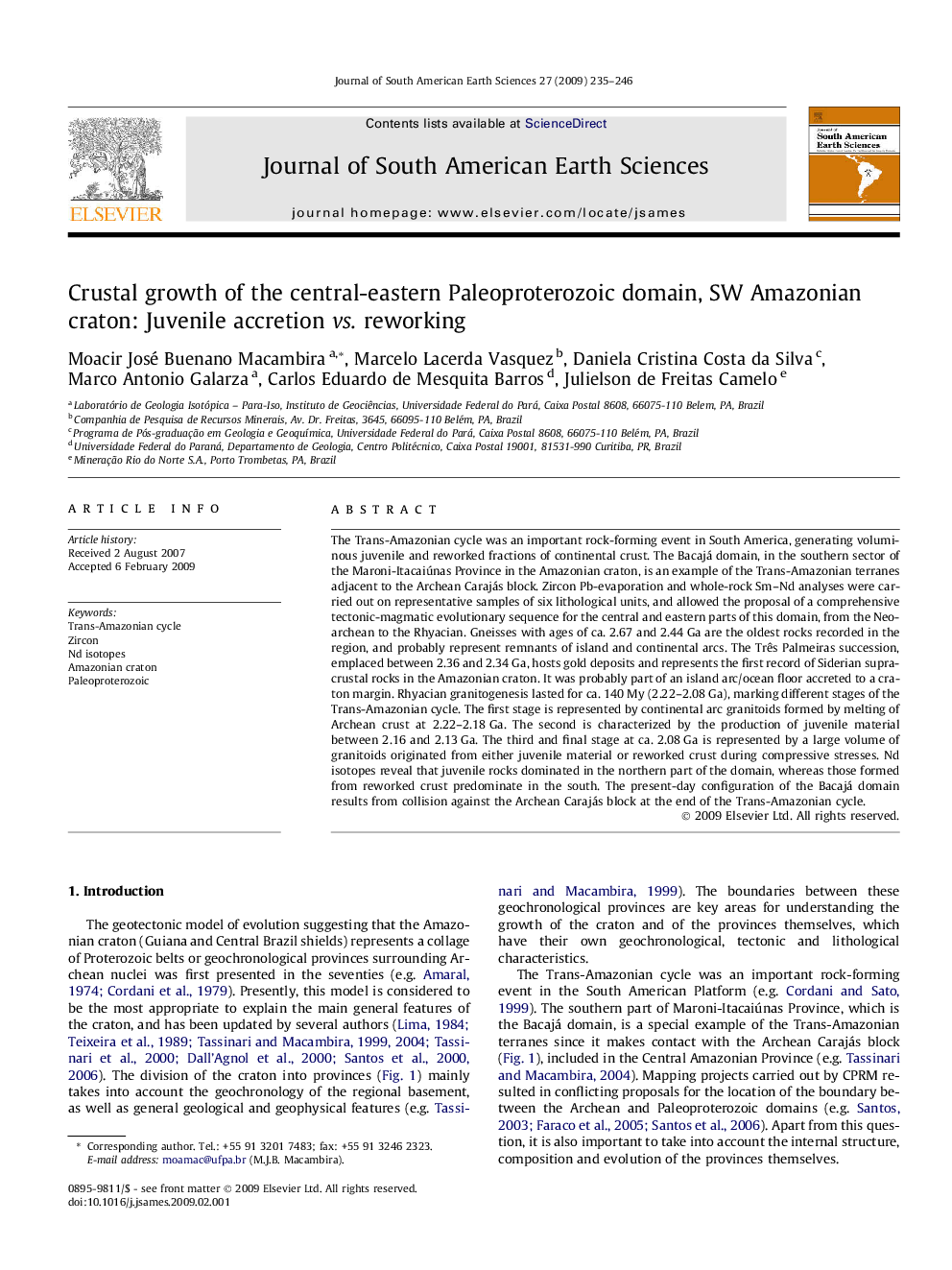| کد مقاله | کد نشریه | سال انتشار | مقاله انگلیسی | نسخه تمام متن |
|---|---|---|---|---|
| 4682730 | 1348939 | 2009 | 12 صفحه PDF | دانلود رایگان |

The Trans-Amazonian cycle was an important rock-forming event in South America, generating voluminous juvenile and reworked fractions of continental crust. The Bacajá domain, in the southern sector of the Maroni-Itacaiúnas Province in the Amazonian craton, is an example of the Trans-Amazonian terranes adjacent to the Archean Carajás block. Zircon Pb-evaporation and whole-rock Sm–Nd analyses were carried out on representative samples of six lithological units, and allowed the proposal of a comprehensive tectonic-magmatic evolutionary sequence for the central and eastern parts of this domain, from the Neoarchean to the Rhyacian. Gneisses with ages of ca. 2.67 and 2.44 Ga are the oldest rocks recorded in the region, and probably represent remnants of island and continental arcs. The Três Palmeiras succession, emplaced between 2.36 and 2.34 Ga, hosts gold deposits and represents the first record of Siderian supracrustal rocks in the Amazonian craton. It was probably part of an island arc/ocean floor accreted to a craton margin. Rhyacian granitogenesis lasted for ca. 140 My (2.22–2.08 Ga), marking different stages of the Trans-Amazonian cycle. The first stage is represented by continental arc granitoids formed by melting of Archean crust at 2.22–2.18 Ga. The second is characterized by the production of juvenile material between 2.16 and 2.13 Ga. The third and final stage at ca. 2.08 Ga is represented by a large volume of granitoids originated from either juvenile material or reworked crust during compressive stresses. Nd isotopes reveal that juvenile rocks dominated in the northern part of the domain, whereas those formed from reworked crust predominate in the south. The present-day configuration of the Bacajá domain results from collision against the Archean Carajás block at the end of the Trans-Amazonian cycle.
Journal: Journal of South American Earth Sciences - Volume 27, Issue 4, April 2009, Pages 235–246